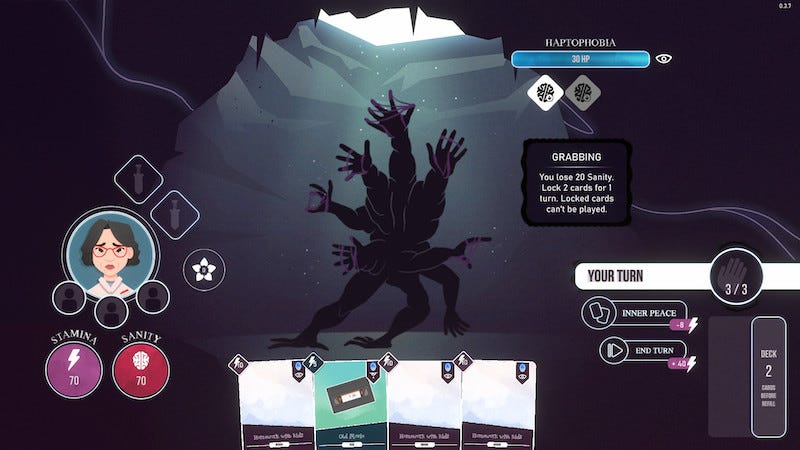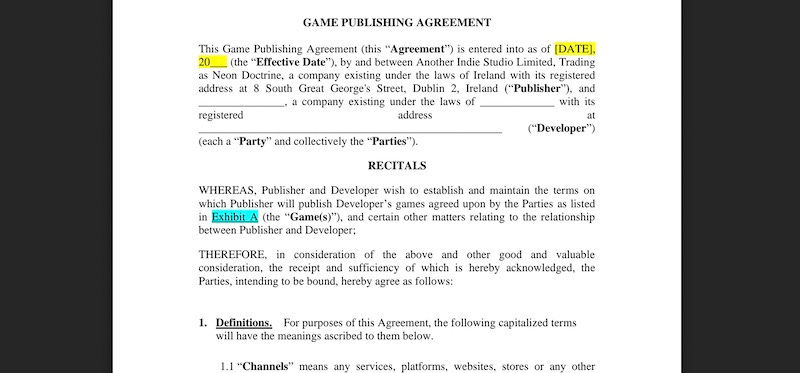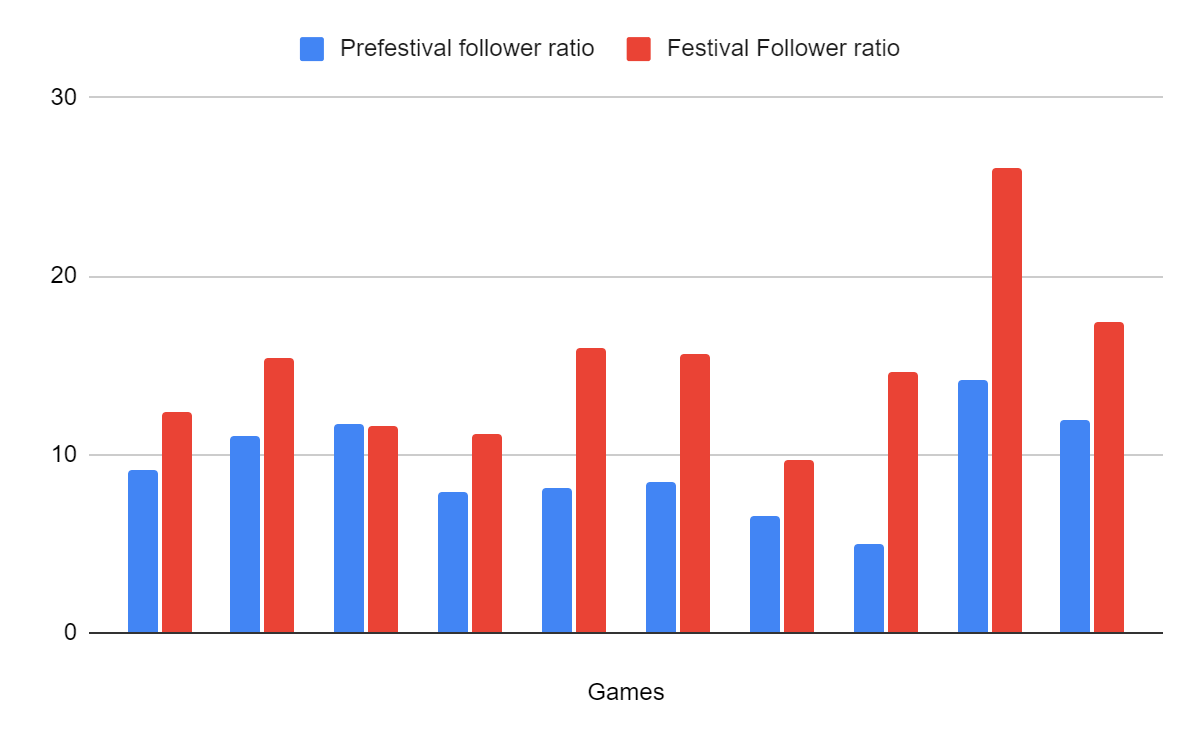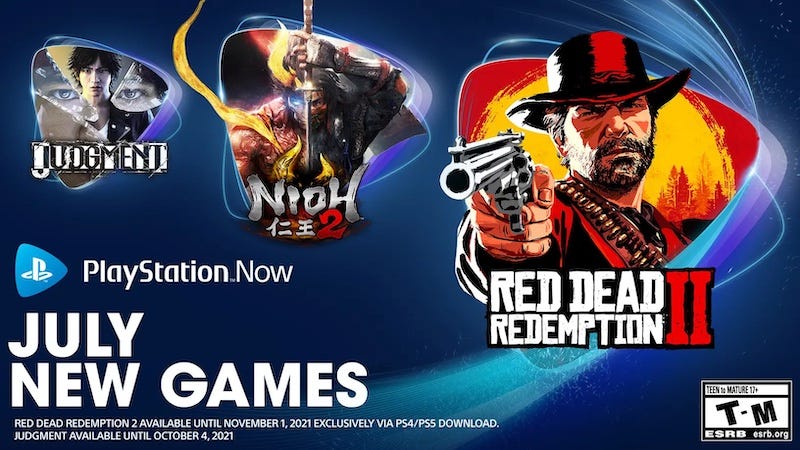Are these really the 'ugly truths' for indie publishers?
Publikováno: 8.7.2021
Agree with... most of 'em!
[The GameDiscoverCo game discovery newsletter is written by ‘how people find your game’ expert & GameDiscoverCo founder Simon Carless, and is a regular look at how people discover and buy video games in the 2020s.]
Welcome to the second newsletter of this fine week in game discovery, folks. In today’s ‘did you know?’ intro - did you know that VC-funded Internet pranksters MSCHF (they did Lil Nas X’s Satan shoes, see this article for some background!) released a Steam game a few weeks back?
It’s the very silly Chair Simulator. And as Wired notes, you can choose influencers such as MrBeast or Neekolul as your avatar, and “your goal is to sit, earn Sit Points, and purchase all 100 of the chairs. That's it.” And it’s not even monetized. It’s just… a big silly joke. (Sometimes I feel like the whole of the Internet is a big silly joke.)
[Reminder: one week to go on the 20% off discount for new GameDiscoverCo Plus subscribers, following the launch of our ‘Complete Game Discovery Toolkit’ eBook. You also get Discord access, exclusive weekly newsletters, Hype back-end access for unreleased Steam games.]
The ugly truths of indie publishing?
A good kicking-off point for today’s newsletter is the new Tavrox Games blog post - ‘The ugly truths of indie publishers’. The creators of Neurodeck (pictured above) are headed by Yannick ‘Tavrox’ Elahee. He makes some thought-provoking points in the opinion piece (read it!) that we’d love to quote and elaborate on:
“Daily (organic) wishlists is the main thing that matters to the publisher” - absolutely. I also dig Tavrox’s ranking in there: “100 wishlists/day is crazy good… 50 wishlists/day is very interesting… 20 wishlists/day is an average good indie game on Steam… 10 wishlists/day is a bit low and probably not worth investing 50k into the project… 5 wishlists/day is a catastrophe.” Plus, if you have great organic wishlists after launching on Steam, realize that a) you have more leverage and b) there might be some justification to self-publish?
“They will drop out of the game if it doesn’t bring money” - this is specifically complaining about post-launch prioritization from game publishers who have a lot of games in their portfolio. (Which… we’ve seen. But bringing slow launches back is VERY difficult.) Key quote: “I saw business relationships deteriorating because developers thought all the marketing was done by the publishers. You need to work on it as well. Don’t leave everything to the publisher but don’t settle for a low-effort marketing campaign.” A active post-launch ‘themed patch’ and discount strategy is key. Maybe devs and publishers should pre-agree the first few months of post-launch promotion, before the game launches?
“They’re great at getting past trends and unable to predict future trends” - so, this idea behind this point is“they’re playing safe 90% of the time. The 10% left is their gamer ego that wants to fund the games they’ve always loved as a kid.” We actually… disagree. Many publishers look at an insufficient amount of possible games. And they still pick titles based more on intuition than a clear, empirical view of trends. Also: devs and publishers alike are a bit biased towards game that ‘could’ be multiplatform hits but now sit in overly contested genres - Metroidvanias, action roguelites, etcetera? That’s not ‘playing safe’, even if it feels like it.
‘They’re unable to see placeholder [assets] for what they are’ - the key point here is: “When you send a vertical slice or prototype, it needs to be super fun. It is a hundred times better to have a high-quality 10-minute demo than a medium-quality 100-minute demo.” We agree: ‘make a 9-page Raw Fury-esque deck, a kickass 10 minute vertical slice that looks polished, and mail it to every publisher you can find’ is by far the best way of getting your game signed nowadays. Don’t create reasons for publishers to get confused - even if that’s not fair on their part.
Perhaps the opinion piece is borderline sour. Which is why it’s also entertainingly provoking. But it also illuminates the complex, interdependent relationship between developers and publishers. A lot of two-way trust is needed, and also shared responsibility.
It’s complex, but it can be super rewarding if it goes well. Just be aware - publishers are rarely the magic bullet for success, but rather the support and push that helps you improve your game and ‘take it over the top’. Devs, decide if you need one or not, and then act appropriately!
Another indie publisher releases its contract!
We’re not entirely sure when this happened, but indie publisher Neon Doctrine(Vigil: The Longest Night & Lost Castle) has a copy of its publishing contract available to peruse on its about page - here’s the Google Drive link.
We’re excited about this because it appears to be the Goldilocks of game publishing agreements. The two previously available ones, from Raw Fury and Whitethorn Digital, which we analyzed in medium depth, were ‘OK but a bit spiky’ and ‘surprisingly permissive’, respectively. So it’s great to get a third example.
As explained in the intro: “As publisher we usually take between 30-50% of the games total revenue. 50% usually only when we provide the majority of the games funding, when we port for that specific platform or channel, or both.” Oh, and: “When recouping, we usually do not recoup 100%. We prefer to do 70% Publisher and 30% developer during the recoup period.” That’s a higher than average developer recoup, btw.
Notes from us: the example publisher agreement is set for 3 years (relatively low, but renewable?) And it includes out-of-pocket marketing (“game showcases, PR campaigns, community events, influencer organization, advertisements [etc]”) being part of recoupable costs, to a pre-agreed amount. Often standard, also worth noting. But if anyone has additional comments on the agreement, ping us and we’ll do a follow-up!
What happened in Steam NextFest - surveyed!
Big shout-out to Chris Zukowski for his detailed survey of results from Steam NextFest-featured titles. He’s doing amazing work here, crunching a huge amount of data. Most notable are the top-line results: “Average wishlists earned: 3752; Median wishlists earned: 957; Fewest wishlists: 95; Most wishlists: 70187.”
The above graph on Steam wishlists additions the bottom 5 games he surveyed indicates that the Festivals/Next Fests may be increasing in popularity. (The top 5 had a weirder result, due to better amplification for certain high-profile/featured games.)
Another thing I’m super happy that Chris graphed: “I did a little analysis to calculate the Wishlist to Follower ratio before the festival and during the festival for the top 10 games.” Basically, the ratio of top games - perhaps an indication of poorer quality wishlists - went up, but was not startlingly worse:
However, I also asked Chris to graph for GameDiscoverCo all the games in the Festival - the most popular ones on the left, the least popular on the right:
Looks at some of the ratios to the right here - looks like there may be some kind of low-level ‘wishlist most the games in the festival blindly’ behavior going on. Or these wishlists just behave differently because of how they found the games, I guess?
Anyhow, lots more in there - demo downloads, data galore - if you want to go and check it out. And thanks to Chris for making this all available so freely.
The game discovery news round-up..
So this is the final GameDiscoverCo free newsletter of this week. Don’t forget to sign up for our paid tier if you want tomorrow’s Plus-only missive talking about the big post-Summer Sale week for Steam debuts!
But in the meantime, here’s the final set of interesting game discover links - rounded up for your pleasure:
Very interesting to see a bunch of U.S. State attorney generals going after the Google Play Store with an antitrust lawsuit, which “challenges Google’s policy forcing Google Play app developers to pay a 30 percent commission fee on sales made through the app.” Does it feel like Epic/Apple has emboldened U.S. lawmakers? Quite possibly. Google says: “It’s strange that a group of state attorneys general chose to file a lawsuit attacking a system that provides more openness and choice than others.” Big ‘pointing at Apple’ vibes there, then.
It’s possible that some of you aren’t paying enough attention to PlayStation Now, Sony’s ‘formerly cloud but increasingly downloadable’ monthly game subscription service. It used to be very back catalog-based, but the latest additions - Red Dead Redemption 2 until November, Nioh 2, Judgment until October - are started to make it more competitive with Game Pass. (Though Sony doesn’t want to front-burner it, since they think Game Pass is going too far.)
Microlinks: deck-building strategy game Rise Of Humanity reports in on its Steam Next and Prologue wishlist effects; a discussion on how integrated influencer marketing makes increasing sense in the game space; an important piece on why ‘quality of life’ or business stability is an issue in the indie game space as much as AAA.
Some fun stats from Thomas Altenburger: “Steam broke its record last year: 9 279 releases in 2020. That's twice [as much as] 2016. That's a release every 53 minutes. 50% of games sold less than 640 units. 75% of games sold less than 2800 units. 5% of games made 90% of all the sales.” As discussed on the GameDiscoverCo Plus Discord, we don’t think this is a problem with Steam. Just, you know, there’s a lot of choice, much - but absolutely not all of it - from amateur devs not expecting profit.
Here’s an intriguing Twitter thread from Nicolas Verge (Popagenda) about the ‘platform woes’ discussion of recent: “Not every port is worth doing. Ports cost money and can be hard to make (either internal or outsourced). A lot of devs think they'll easily make their money back and it's not necessarily the case.” The metapoint here is an opportunity cost one: if you break even eventually on a console conversion of a game, what else could you have been doing with the time needed to make it?
Microlinks 2: if you want to know about possible monetization of Roblox games, there’s now BloxBunny. some interesting trending on how different mobile app types are recovering from the pandemic; did you know you can see a list of the most-followed Steam games (not just unreleased ones!) via SteamDB?
Finally, behold a super cute ‘be careful what you embed in your Steam news posts’ anecdote. Garry Newman (Rust, Garry’s Mod) had, uhh, ‘a situation’ with the bandwidth on Facepunch.com:

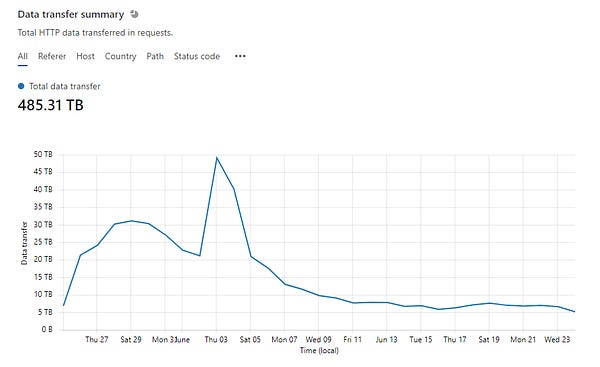
The culprit, it turns out, was 160 terabytes each (!) of data transfer from 2 x 200mb 1080p animated GIFs embedded in a Rust news announcement. Now, we’re pretty sure that Facepunch has the cash to deal with that. But… always look carefully at the size of files you’re uploading, eh?
PS - apologies to John Brosio for not crediting his painting ‘Fatigue 2’, from 2009, which was the lead image in the last newsletter: a reader pointed me to the original source. And if you like giant crabs, you can buy a print of it here!
[We’re GameDiscoverCo, a new agency based around one simple issue: how do players find, buy and enjoy your premium PC or console game? You can subscribe to GameDiscoverCo Plus to get access to exclusive newsletters, interactive daily rankings of every unreleased Steam game, and lots more besides.]
